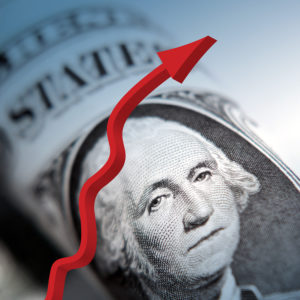In May, America’s economy added 75,000 jobs — a level that fell below expectations. However, despite the blip in the economic climb, Americans have reason to be optimistic.
Consider that there is a near-record level of available jobs and Americans are experiencing the lowest unemployment rate in 50 years. This unique combination puts us close to what economists call “full employment,” where nearly everyone who wants a job already has one.
According to the Federal Reserve, there are nearly 7.5 million job openings. Some of these open positions are for employment opportunities like electricians, and these jobs can provide workers with six-figure annual incomes. Likewise, the restaurant industry in New York City is reporting difficulty in finding new employees.
In the short run, a skills shortage can lead to slower economic growth — but it’s important to understand that slower growth doesn’t necessarily mean the economy is getting weaker.
It’s exciting that the GDP has been growing at such a vigorous rate — but economic growth should never be taken as the end-all and be-all of economic health. For example, Singapore is ranked second in economic freedom and has a higher GDP per capita than the United States. By all accounts, Singapore has a strong and thriving economy — yet its year-over-year GDP growth in the first quarter of 2019 was only 1.3 percent. Meanwhile, the IMF reports that South Sudan, one of the most impoverished countries, has a GDP growth of 8.8 percent.
Clearly, the rate of GDP growth alone cannot tell us everything about a country’s economy.
The good news is that, today, our economy is healthy. And a thriving economy shows different signs of life than a recovering one.
Take wage growth as one indicator. As the number of available jobs becomes larger than the number of unemployed people, companies will begin raising wages in an effort to be more competitive. For example, blue-collar workers are in especially high demand, which has already resulted in these employees experiencing faster wage growth than higher-paid ones. Thanks to this environment, truck drivers are also seeing their pay rise at a faster rate than the national average.
Higher wages, in turn, means that consumer spending goes up. Therefore it shouldn’t be surprising that consumers have continued to increase their spending habits.
As businesses look to hire the best employees and provide higher wages as incentives, this encourages people to learn new skills. In the spring of 2017, construction trades marked a 26.4 percent enrollment increase — the single largest increase for all programs at four-year institutions. At the same time, more people are realizing that not everyone needs a four-year degree; Generation Z is increasingly picking trade school over college.
In short, our economy is driving job creators to offer better-paying jobs for positions that require more specialized skills. Businesses are becoming more competitive while workers are becoming more valued. This is creating a resilient economy that works for employees and employers alike.
If smart pro-growth, pro-business policies remain in place, the U.S. economy will continue to improve through rising wage levels, better job security and stronger benefit packages. Just don’t expect the progress to necessarily be seen in monthly job creation figures or fantastical quarterly GDP jumps.

